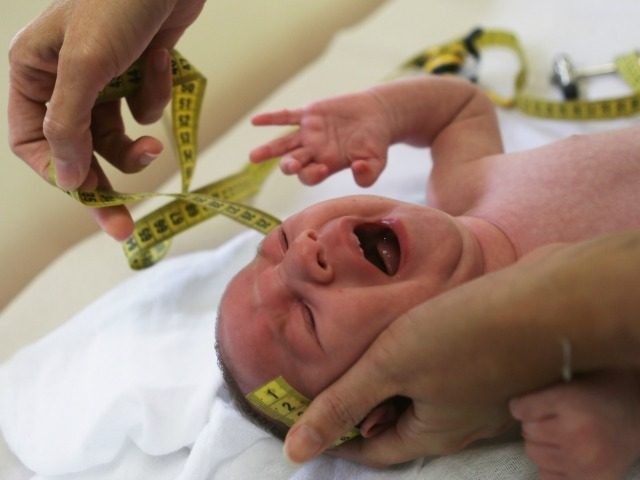The British Medical Journal (BMJ) has published a new study finding that the Zika virus is tied to a second severe health condition in unborn children and infants: arthrogryposis, a condition in which an infant’s joints are deformed, making their limbs barely functional.
BMJ researchers studied seven children who have been born to mothers testing positive in Brazil, and all but one were diagnosed with the condition in both arms and legs. The seventh only exhibited symptoms of the condition in his or her legs. All seven children were also diagnosed with microcephaly, the condition now known as the signature neurological defect caused in the unborn by Zika. Microcephaly causes the infant’s skull to develop a smaller size than the brain, crushing the brain and causing a variety of neurological defects.
Arthrogryposis is a joint condition in which the muscles that control joint movement do not properly contract or loosen in the womb. The child’s limbs contort as the muscles grow and get stuck in positions that make normal body movement impossible.
The BMJ study found no physical damage in the joints of the infants diagnosed with arthrogryposis, suggesting that they are being forced into the strange positions through nerve triggers. The condition “did not result from abnormalities of the joints themselves, but was likely to be of neurogenic origin,” they write. In other words, Zika targets the nerves that control muscle movement, not the limbs affected.
Scientists definitively concluded that the Zika virus can cause microcephaly in the unborn in April, months after Brazil began experiencing a surge in the number of Zika cases and obstetricians around the country were seeking an explanation for the high number of infant deformities being documented. While Zika typically causes no symptoms in most adults who are infected — an estimated 80 percent — it has also been linked on rare occasions to a condition known as Guillain-Barré Syndrome (GBS). GBS causes intense joint pain, paralysis, and sometimes death. Most cases of death following a Zika-related GBS diagnosis have occurred in Venezuela, where common medical treatments are impossible to find due to the socialist country’s severe food and drug shortage.
Experts estimate that the current epidemic may continue for up to four years. Some studies have suggested the only way for the epidemic to end is for all people in the Western Hemisphere to contract the virus and, thus, be inoculated to its effects.
While most of those affected by the virus reside in Latin America, where the current outbreak began, the continental United States has documented a number of cases. Two infants in California, one in Texas, and one in New Jersey have been diagnosed with microcephaly following a positive Zika diagnosis. As the weather has warmed in Florida, Miami has become a problem spot for the aedes aegypti mosquito, which carries the virus. The U.S. Centers for Disease Control have warned pregnant women to stay away from the northern Wynwood neighborhood of Miami, where 18 locally-acquired cases of the virus have been diagnosed. Florida officials have begun an aerial spraying campaign using the insecticide naled, considered a relatively harmless-to-humans chemical.

COMMENTS
Please let us know if you're having issues with commenting.